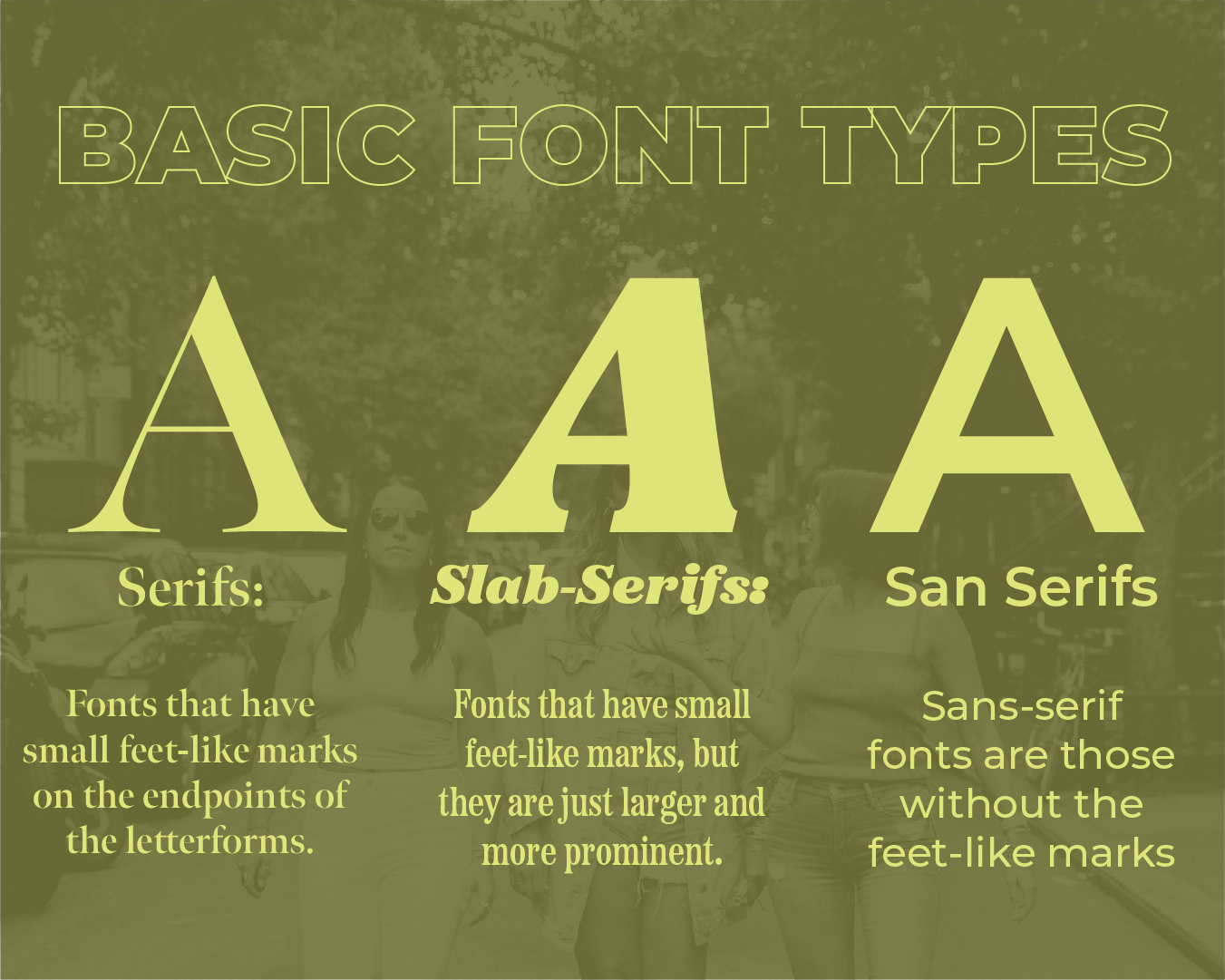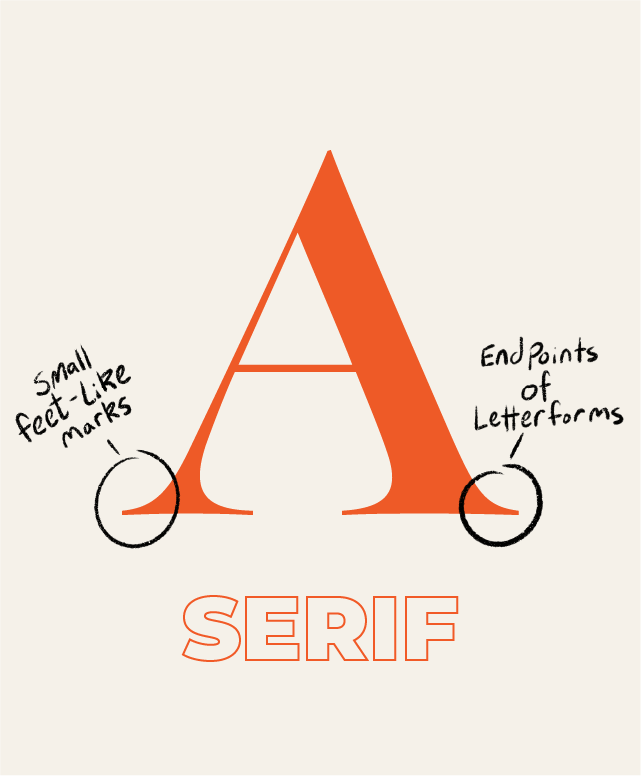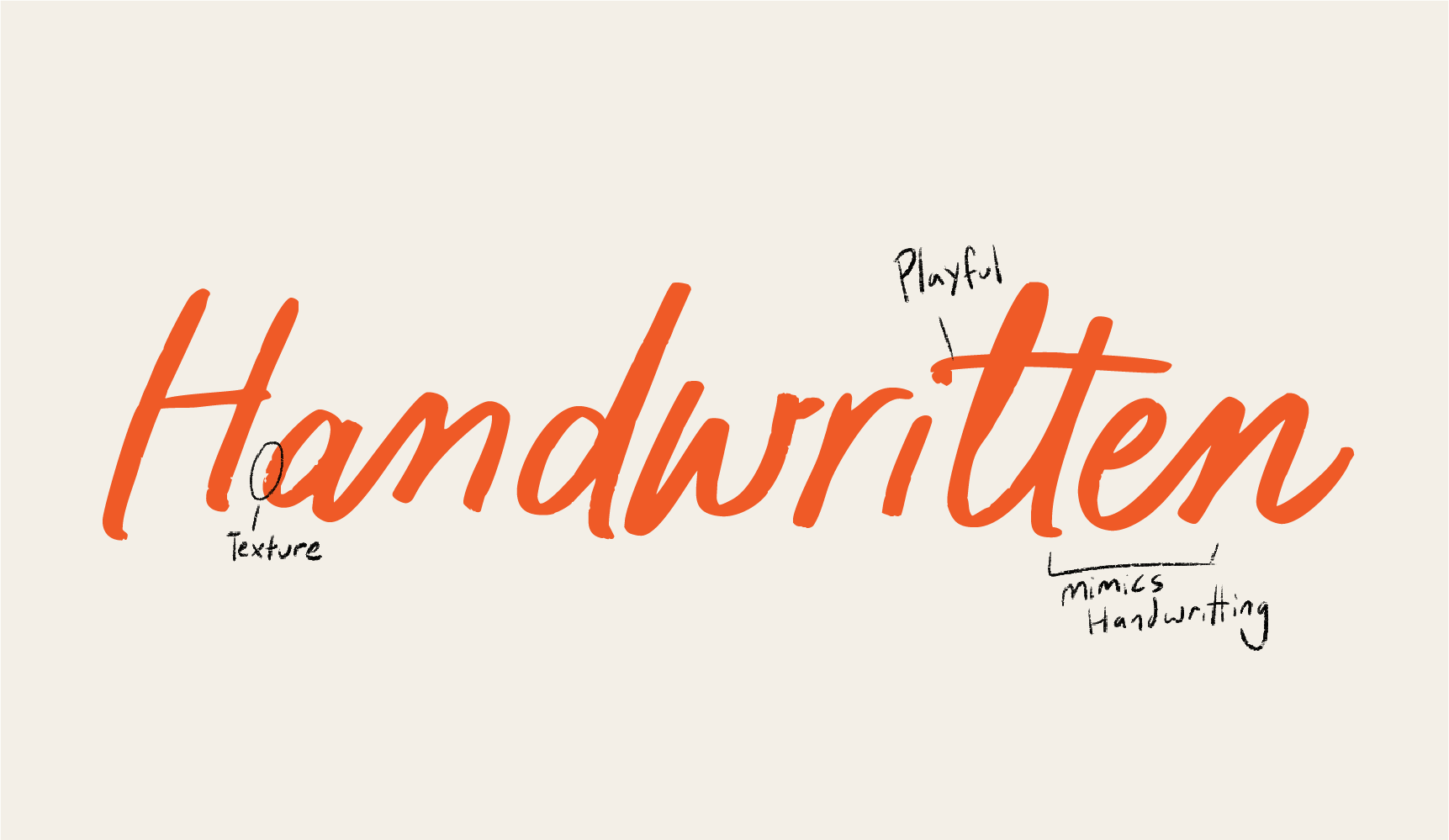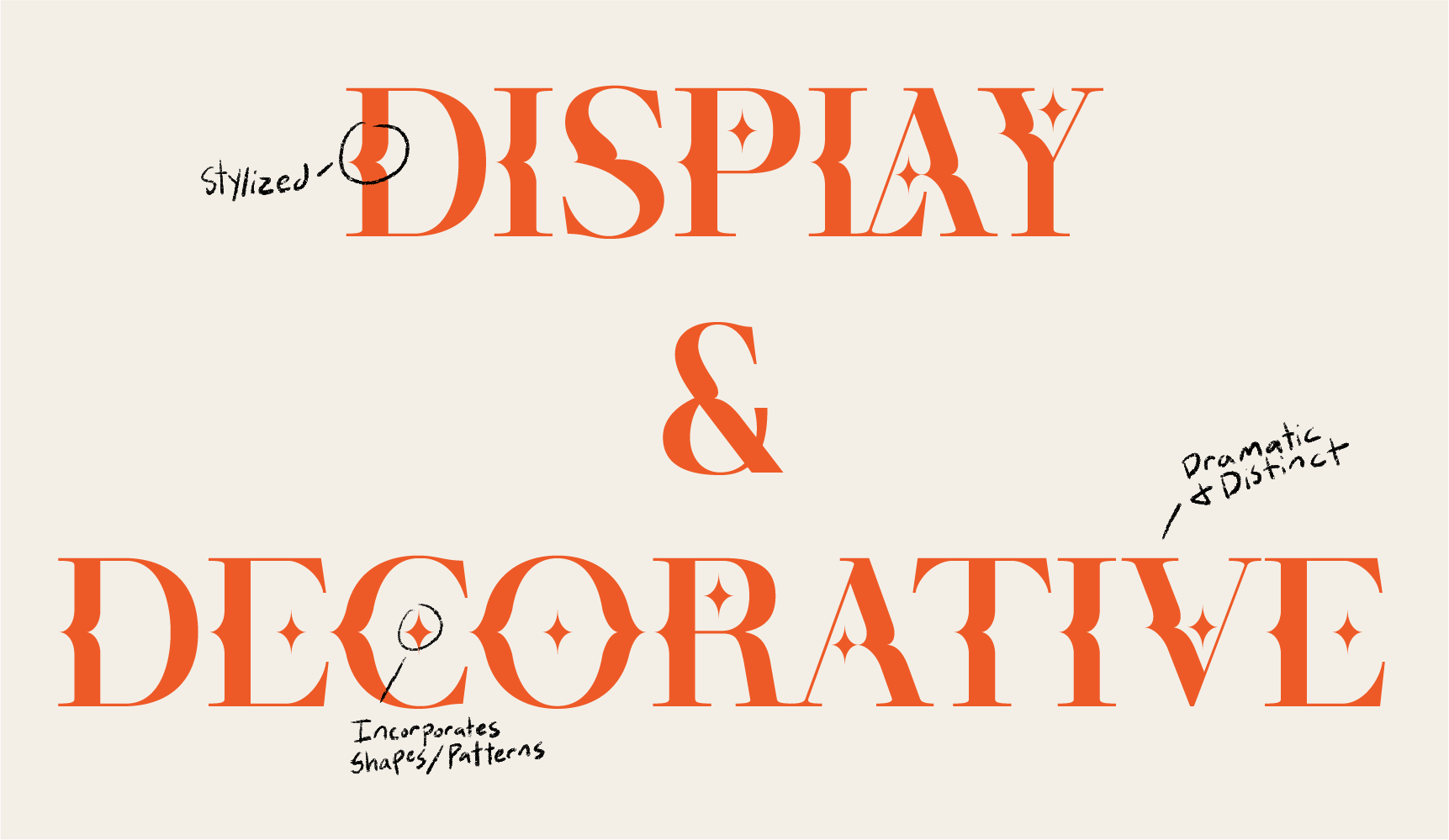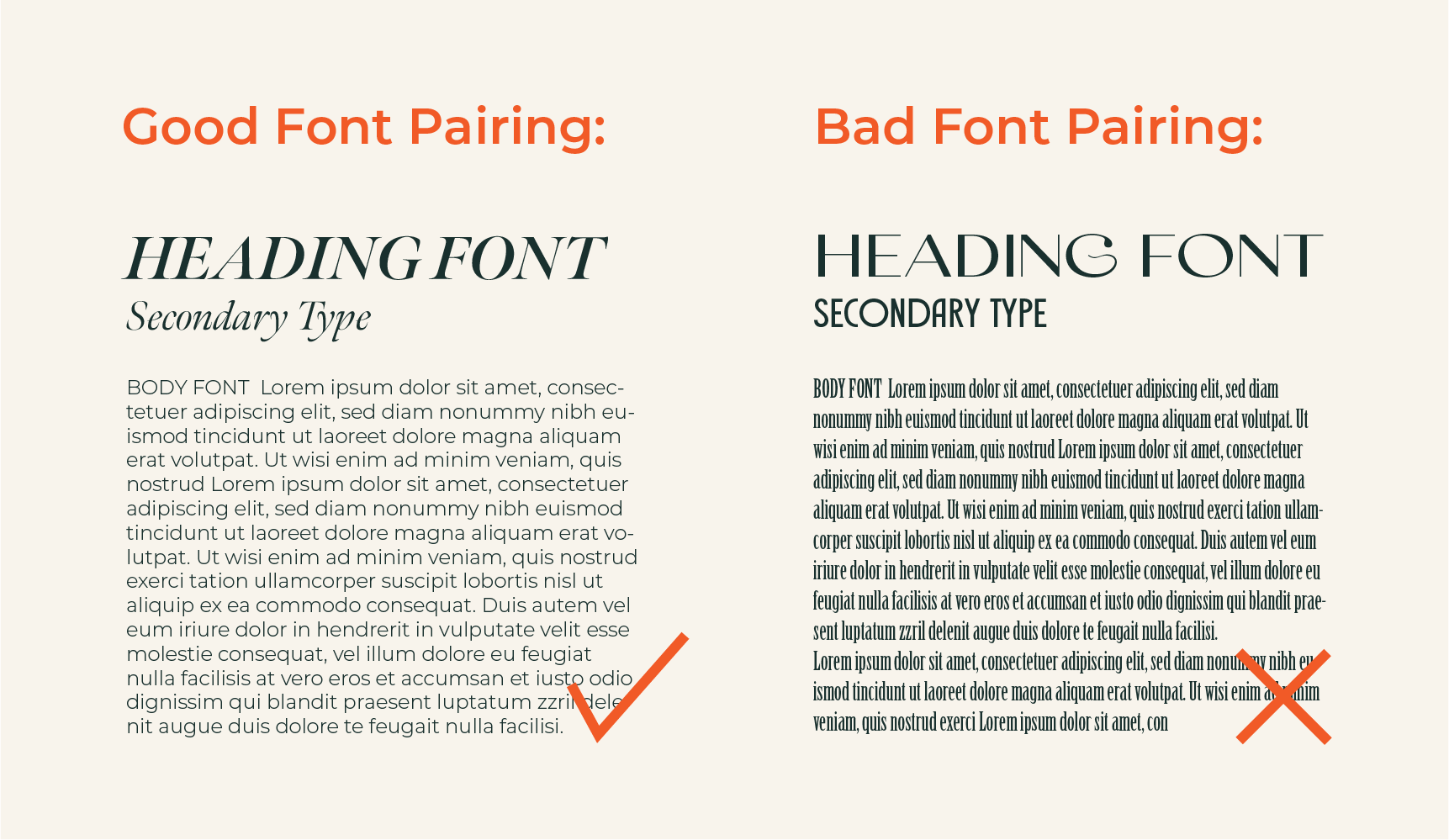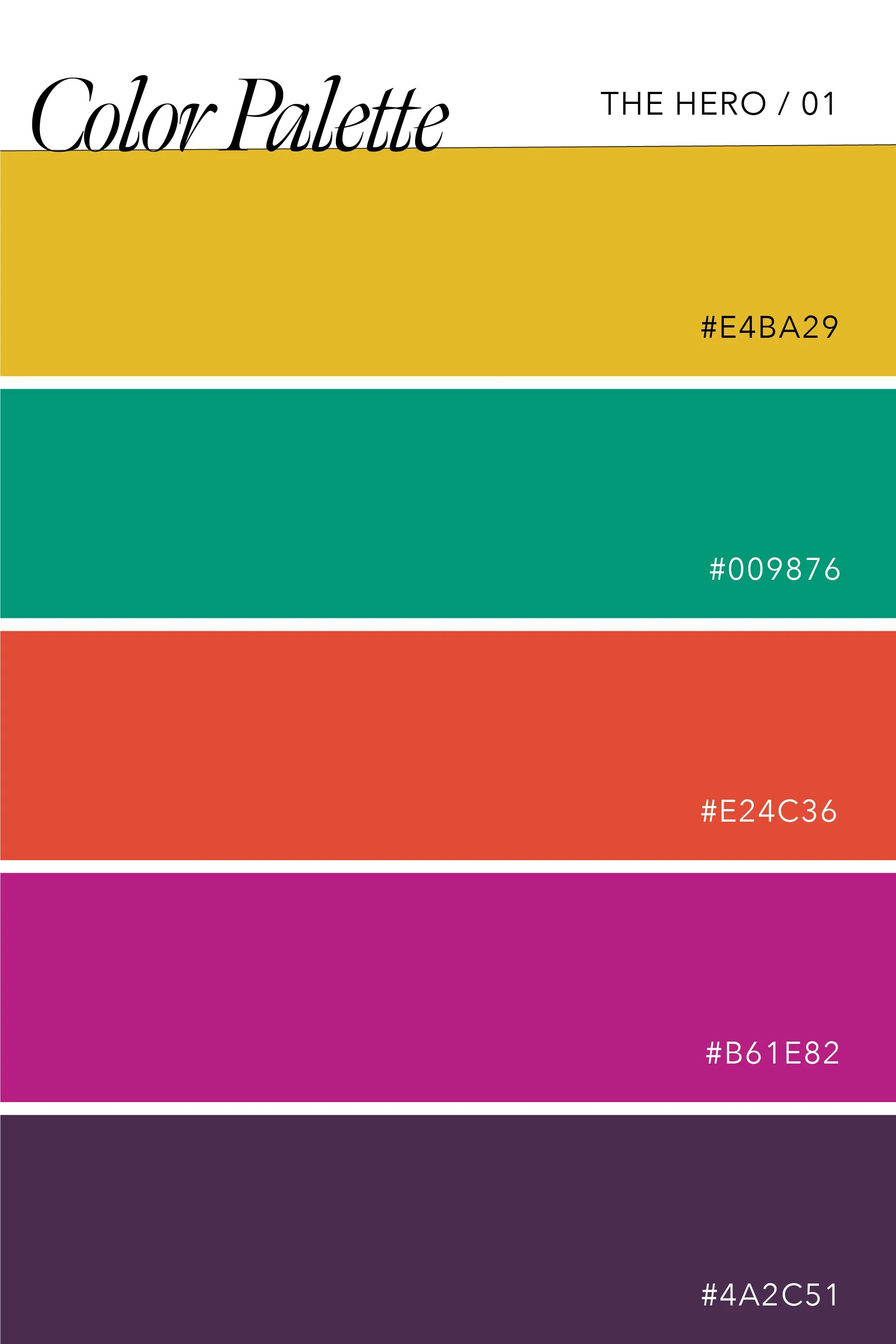How to Choose Fonts That Reflect Your Brand Personality
Oh the wonderful, dreamy, and sometimes ~intimidating~ world of fonts!
It’s when all of your brand elements- I’m talking colors, logos, fonts, etc.- represent your brand personality that the magic happens. That is when your message is clearly communicated to your dreamy clients, and looks good while doing it! But how do you ensure all of these elements do just that? Great question, I’m so glad you asked! In this blog, we detail the best (and easiest) method for choosing a font that reflects your brand personality. You heard that right, successful and simple- so let’s get into it!
What’s a brand personality?
Before you can jump straight into choosing a font that reflects your brand personality you have to have a solid understanding of what your brand personality is in the first place. Think of your brand personality as the vibes and energy that your brand puts out into the world. If your brand was a person, it’s how their personality would be described. There are so many ways to do this… where to even start? Looking at which archetype best represents your brand will allow you to better understand the kind of language and descriptive words that communicate your brand personality.
Is your brand chic and elegant, or more energetic and bold? Caring and soft, or edgy and intense? Whichever it is, these feeling-evoking words are what are going to help you find and choose fonts that are the perfect fit. Check out our blogs on each of the 12 brand archetypes HERE to get started.
Type of Fonts
Now that you know what your brand personality is, this is when we bring in the fonts. When looking at fonts, it helps to know and understand the different classifications and types of fonts that are out there. Each of these font types has feelings and sensations traditionally associated with them. I’ll save you the deep dive into the semiotics and visual connotation theories that make this so, but if you want to learn more it’s definitely quite an interesting topic. Anyways- let’s break down each font category and see what words each is associated with.
Serif
Serif fonts are fonts that have small feet-like marks on the endpoints of the letterforms. They are actually the oldest style of typography! These fonts are associated with feelings of trustworthiness, tradition, and class. Times New Roman is a great well-known example of a serif font.
Sans-Serif
Sans-serif fonts are those without the feet-like marks mentioned above. Their shapes are modern so they, therefore, evoke the same feeling. They bring a sense of cleanliness, minimalism, and simplicity. Many popular brand logos use sans-serif fonts, and Helvetica is a popular example.
Slab-Serif
Similar to serif fonts, slab-serif’s have those same feet-like marks, but they are just larger and more prominent. These fonts are often used for quirkier, bolder, and more upfront uses than traditional serif fonts. They appear both classic and current. Rockwell is a common font that represents this category.
Script
Script fonts are those that imitate cursive handwriting. They have swooping lines that connect all of the letters together in a flowing and smooth matter. They represent elegance and each is unique. They tend to follow the trends of the moment, and Lucida Script is one of the more popular script fonts of the moment.
Handwritten
As the name suggests, handwritten fonts look like they were written by hand! Because of this, there are many totally different handwritten fonts to choose from and each has its own unique feel. Overall, they come off as playful, approachable, and casual. Permanent Marker is just one of the many handwritten font options.
Display/Decorative
This last category of fonts is the most diverse! These fonts are those that have funky and varying forms, proportions, and letterform shapes. They are highly stylized and may even incorporate textures and patterns. They can be very memorable and dramatic and are seen as stylized and distinct. Fredericka is a wonderful example!
Whew, did you get all that? No need to worry if not! Check out the handy reference guide at the end of this blog for a recap anytime you need.
Think back to those descriptive words you identified for your brand personality - which category do they most resonate with? Narrowing down what you are looking for into one of these categories will not only help you find a great font match but will make it easier to search and filter font options on the many font databases available. My favorite place to find fonts from any of these categories is Creative Market! They have tons of options and make it easy to find the perfect fonts for any brand personality. Check out Creative Market HERE.
Pairing Fonts Together
Once you decide on the perfect brand font, you most likely will need another one. Yeah, you heard me. You will most likely need two (or more) brand fonts. The one you choose as your primary font is where you can really let your personality shine. It will be used for logos, headings, important text, and other small but crucial snippets of info. Your secondary font should also represent your brand personality, but you need to ensure that it works for large chunks of text and at smaller scales. In other words, people gotta be able to read what the hell you're telling them! Secondary fonts are often simpler and complementary to the primary font.
A good tip for finding fonts that work together is to pay attention to the weight or boldness of the fonts.
You don’t want your secondary font to compete with the star of the show, your primary font. When both of your brand fonts reflect your brand personality and are used together across all of your brand materials, it creates a strong and clear brand message and identity!
And that’s it! Using the main font categories as differentiators will help you choose the right font for your brand personality. The feelings and associations of fonts are engrained into our brains whether we want them to be or not, so use them to your advantage! Pick fonts that will help convey your amazing and important brand message to your clients!

